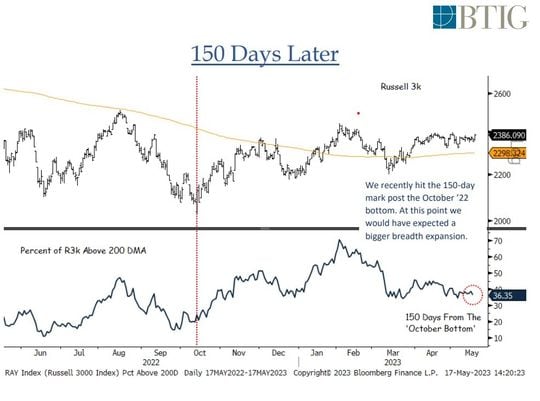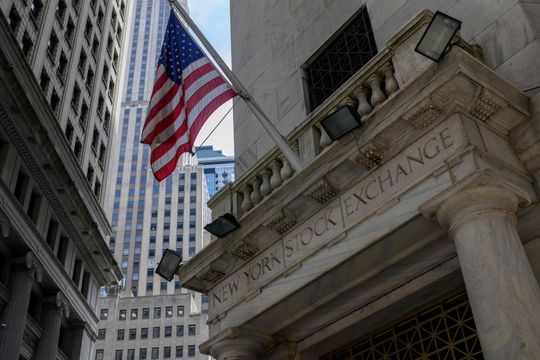U.S. stock futures are holding just shy of 2023 highs as government debt-ceiling wrangling continues.
How are stock-index futures trading
- S&P 500 futures ES00, 0.07% dipped 2 points, or less than 0.1%, to 4202
- Dow Jones Industrial Average futures YM00, 0.09% fell 30 points, or 0.1%, to 33466
- Nasdaq 100 futures NQ00, 0.01% rose 6 points, or 0.1%, to 13864
On Friday, the Dow Jones Industrial Average DJIA, -0.33% fell 109 points, or 0.33%, to 33427, the S&P 500 SPX, -0.14% declined 6 points, or 0.14%, to 4192, and the Nasdaq Composite COMP, -0.24% dropped 31 points, or 0.24%, to 12658.
What’s driving markets
The new week is starting on a tentative note as traders continue to eye developments surrounding the U.S. government debt ceiling deadline.
“Broader market sentiment will likely tango to the mood music in Washington as the debt ceiling discussion evolves. President Joe Biden and House Republican Speaker Kevin McCarthy will meet after a reportedly ‘productive’ phone call on Sunday as the president returned from the G7 summit,” said Stephen Innes, managing partner at SPI Asset Management.
Also helping to underpin sentiment are hopes for cooling tensions between the U.S. and China, after Biden over the weekend said he expected relations should improve “very shortly.”
This may have been counteracted somewhat by news that Beijing had banned Chinese companies from using Micron MU, +0.89% chips. However, investors appear sanguine about how this may impact the broader tech sector with China exposure, and Nasdaq futures have recovered an early session dip.
While bulls welcome the S&P 500’s SPX, -0.14% move to the top of — and on Friday, briefly through — its multi-month range, some analysts remain wary about technical factors that they believe point to trouble ahead for stocks.
Jonathan Krinsky, chief technical strategist at BTIG, analyzed the Russell 3000 index RUA, -0.23% — which covers 98% of U.S. equities — since it hit the October 2022 low some 150 sessions ago, and found a problem with what’s known as market breadth.
“Of the nine meaningful drawdowns since 1995, the average percentage of Russell 3k stocks trading above their 200-day moving average at the 150-day mark post the bottom was 70% (min 56%, max 88%). This time around it is just 36%. In other words, it would be by far the weakest breadth this far off a major bottom of any new uptrend over the last ~30 years.” Krinsky wrote in a note published on Sunday.

Meanwhile, the Nasdaq is up around 20% so far in 2023, he said, just filled a gap from August ’22 and is “showing signs of upside exhaustion.”
“We think the move last week was part of a last gasp blow-off in the Nasdaq. While there was a modest expansion of new highs last week, we will reiterate what we said last week that the weak parts of the market really need to start working or the risk is everything falls together,” Krinksy added.
However, Mark Newton, head of technical strategy at Fundstrat, reckons the market rally has further to go before possibly hitting the buffers.
“Friday’s reversal isn’t too meaningful and generally the [S&P 500] breakout should extend higher into next week into 5/27-28…SPX likely rallies into next week up to 4250 and higher to 4275-4325 which will be a time where technology might finally stall out after its recent surge,” wrote Newton in a note.
There are no U.S. economic updates of note due Monday, but there will be Fedspeak, with St. Louis Fed President James Bullard making comments at 8:30 a.m., San Francisco Fed President Mary Daly talking at 11 a.m., while Atlanta Fed President Raphael Bostic and Richmond Fed President Tom Barkin will be in conversation at the Technology-Enabled Disruption Conference at 11:05 a.m.. All times Eastern.

